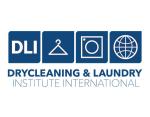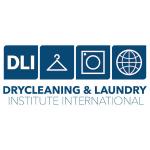NEW YORK — For dry cleaners looking for a tactical competitive advantage in a challenging industry, and not afraid to embrace new technology, the advent of artificial intelligence might provide them with the tools they need.
During her online presentation “AI for Dry Cleaning Businesses: Exploring How Artificial Intelligence Can Enhance Marketing, Customer Service and Operations for Dry Cleaners,” Dawn Avery, executive director of the National Cleaners Association (NCA), highlighted many of the ways small-business leaders are putting AI to use to grow and operate their companies.
In Part 1 of this series, we looked at the evolution of AI as a modern business solution and the inroads it has made in a very short time. In Part 2, we detailed some of the tools available to dry cleaners who want to leverage this technology. Today, we’ll conclude by diving into one of the areas where AI can have the biggest impact for cleaners: their marketing efforts.
The Perfect Customer
“In order to use AI efficiently for marketing, there are things you want to know,” Avery says. “You need to know who your customer is, what their pain points are and what their purchase history looks like. To get the information before, we would have to do surveys and listen and monitor.— we had to figure out all this stuff by hand.”
With artificial intelligence, however, cleaners can begin this process by looking at their own companies and creating an “avatar,” which represents a customer they want to connect with to capture their business.
“We can plug in the information we know about ourselves and our brand, and have the AI ask us questions,” Avery said. “With this, we can build out our avatar. The AI will create a profile that’ll include their gender, income level, occupation, and location and outline common problems they face. It’ll help you to understand what drives your customer, what the key motivators are, and allows you to create then the perfect marketing material for your avatar.”
Avery demonstrated an avatar she had created for a fictional drycleaning company. Her avatar (named “Sarah Johnson”) included basic demographic data such as her age (35), marital status (married), children (two, ages 6 and 3), her occupation (a corporate executive at a mid-sized tech company), income level ($100,000 to $150,000) and location (within a 10-mile radius of the drycleaning company).
The AI went on, however, to list other, more personal traits that Sarah has, including information about her lifestyle (“Balances career with family responsibilities”), personality traits (“Values trust and long-term relationships with service providers”), shopping preferences (“Often seeks recommendations from friends and family”) and a host of other details that allows cleaners to get a real sense of their ideal customers — one that fleshes them out in a way that makes it far more personal than simply “female with career and family within a 10-mile radius.”
Crafting the Message
With information like this in mind, it becomes easier to target social media strategies and other marketing efforts with particular people in mind, rather than vague groups.
Working in ChatGPT (although there are many other AI platforms available today), Avery used the following prompt to develop a content plan:
“Can you build a social media strategy specifically that will speak to avatar Sarah Johnson? What topics is she interested in? Where does she hang out online? What tone should be used with Sarah? Take this information and create a 30-day strategy in a chart format that includes posts, topics, headlines and where to post.”
The content plan ChatGPT developed included suggestions for social media platforms and post types (article, story, posts, pins). Topics with headlines and descriptions of what the post should do were also offered.
On Day 1, for example, the suggestion was an article on LinkedIn headlined “5 Tips for Maintaining a Professional Wardrobe,” with the description: “Share expert advice on keeping work clothes looking sharp, with a subtle mention of your drycleaning services.”
Other articles, stories, posts and pins were suggested for Instagram, Facebook, Pinterest and other platforms.
“Using this prompt with our avatar,” Avery says, “you can build a social media strategy — specifically one that speaks to Sarah Johnson.”\
These suggestions save cleaners or their media teams time because part of the creative work is already done.
“Sometimes we get these creative blocks where it’s hard to come up with ideas and stories and articles,” she says. “Since you have the topics and all this information, you can just jam out the writing.”
Other ways to reach out to customers, such as email marketing, can also benefit from using AI, Avery says.
She used the prompt, “You build a content strategy for Sarah Johnson. Can you provide me with five blog topics and five email headers that would interest her?” Suggestions were then generated, and Avery noted that the AI can also help the cleaner flesh these out with further prompting. While it still takes a human eye to make sure the email is written and targeted correctly, this technology simplifies the process greatly.
Master Prompting
Part of the power of AI lies in being able to craft the right prompts. “A bad prompt in will give you bad information,” Avery says. “So, you want to make sure you’re putting the information in order to get the best possible prompt.”
Because ChatGPT and other AI platforms use natural language processing (NLP) to communicate with users, programming isn’t necessary — only the ability to tell it what is required.
Avery suggests using the CREATE method to effectively use ChatGPT. This is an acronym for:
- Context: Give ChatGPT clear and concise context
- Result: Tell it what you want it to produce for you
- Explanation: Give it more details
- Audience: Tell it who you are making the content for
- Tone: If necessary, add a speaking tone to spice up the output
- Expand: Expand, Elaborate and Edit
For example, a prompt that might deliver valuable results could be:
“You are a marketing expert working for a drycleaning company. Please help me create an email describing for college-educated women ages 37-40 some of the services we offer. Please make the tone engaging and entertaining.”
After the AI presents its results, the user can then work with the platform to expand, clarify, rework and otherwise evolve the answer into something that resonates.
“You need to look at the information, you need to review the information and you need to perfect the information,” Avery says.
As with any skill like this, Avery says that it’s important to use the software, experiment with it and see what works best. While most AI platforms have free-to-use versions, she encourages cleaners to pay for a monthly or yearly subscription, where more powerful tools are available.
“I would, at this time, really encourage you to give up the next cup of coffee or DoorDash per month and pay the $20 for ChatGPT for the month,” she says. “It’s definitely worth the money. It’s better than the free version, and I think it’s very important to have the best tools.”
Implementing AI In Your Business
Avery offers the following advice for cleaners wanting to get to know and use AI in their business:
- Identify Key Areas — Determine which aspects of your drycleaning business could benefit most from AI, such as customer service, inventory management or quality control.
- Choose the Right Tools — Research AI tools and platforms suited to your drycleaning business needs, such as chatbots, inventory management systems or machine learning-based quality control solutions.
- Train Your Team — Ensure your drycleaning staff is familiar with the new AI tools and understands how to use them effectively. Provide training and support to help them adapt to the changes.
- Monitor and Optimize — Continuously monitor the performance of AI systems in your drycleaning business and gather feedback from customers and employees. Use this information to make adjustments and improvements as needed.
“By following these steps,” Avery says, “you can successfully implement AI in your drycleaning business and unlock the benefits of enhanced customer service, operational efficiency and data-driven insights.”
Parting Advice
Avery believes that cleaners who disregard the potential that artificial intelligence can bring to their business will regret their inaction. She notes that Marc Andreessen, who co-authored Mosaic, the first internet web browser, said that AI would prove to be bigger than the internet or the iPhone.
“He says that the chances of us ever seeing something this big again in our lifetime are very slim,” she says.
She concluded by, again, urging those in the industry to not ignore AI as some cleaners did in the past with websites and social media.
“There are three types of people in this world,” she says. “There are the people who make things happen, there are people who let things happen, and there are the people who ask, ‘What happened?’ Who are you going to be?”
For Part 1, click HERE. For Part 2, click HERE.
Have a question or comment? E-mail our editor Dave Davis at [email protected].



































































